The phylogeny of the red panda (Ailurus fulgens): evidence from the hindlimb
- PMID: 19014366
- PMCID: PMC2667555
- DOI: 10.1111/j.1469-7580.2008.00987.x
The phylogeny of the red panda (Ailurus fulgens): evidence from the hindlimb
Abstract
The red panda (Ailurus fulgens) is an endangered carnivore living in the temperate forests of the Himalayas and southern China. The phylogeny of the red panda has been the subject of much debate. Morphological and molecular studies have supported a wide range of possible relationships, including close ties to procyonids, ursids, mustelids, and mephitids. This study provides additional morphological data, including muscle maps, for Ailurus. The hindlimbs of four cadavers from the National Zoological Park were dissected. Red pandas retain a number of muscles lost in other carnivore groups, including muscles and tendons related to their robust and weight-bearing hallux. Three features, including a single-bellied m. sartorius, a proximal insertion for m. abductor digiti V, and an absent m. articularis coxae, are found in all terrestrial arctoids, including Ailurus. In addition, red pandas are similar to ursids and canids in lacking a caudal belly of m. semitendinosus, while they resemble procyonids and mustelids in the degree of fusion observed between mm. gluteus medius and piriformis. Furthermore, Ailurus and procyonids are characterized by numerous subdivisions within the adductor compartment, while red pandas and raccoons share a variable m. semimembranosus, composed of one, two, or three bellies. Lastly, a deep plantar muscle inserting onto the metatarsophalangeal joint of the hallux is described for Ailurus. This muscle has not been previously described and is given the name m. flexor hallucis profundus. Additional dissections of the forelimb and axial musculature of red pandas may shed further light on the phylogeny of this species. In addition, the muscle maps presented here offer a valuable resource for interpreting the functional anatomy of fossil ailurids.
Figures
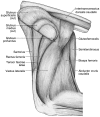
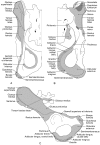
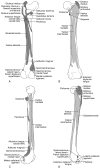

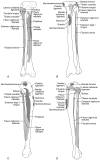
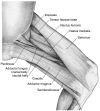



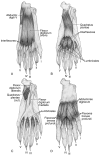
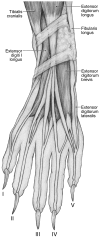

Similar articles
-
The phylogeny of the red panda (Ailurus fulgens): evidence from the forelimb.J Anat. 2009 Dec;215(6):611-35. doi: 10.1111/j.1469-7580.2009.01156.x. J Anat. 2009. PMID: 19930516 Free PMC article.
-
Deciphering and dating the red panda's ancestry and early adaptive radiation of Musteloidea.Mol Phylogenet Evol. 2009 Dec;53(3):907-22. doi: 10.1016/j.ympev.2009.08.019. Epub 2009 Aug 21. Mol Phylogenet Evol. 2009. PMID: 19699810
-
A tail of two pandas- whole genome k-mer signature analysis of the red panda (Ailurus fulgens) and the Giant panda (Ailuropoda melanoleuca).BMC Genomics. 2021 Apr 1;22(1):228. doi: 10.1186/s12864-021-07531-3. BMC Genomics. 2021. PMID: 33794768 Free PMC article.
-
Thoracic limb morphology of the red panda (Ailurus fulgens) evidenced by osteology and radiography.Onderstepoort J Vet Res. 2015 Jul 15;82(1):e1-e10. doi: 10.4102/ojvr.v82i1.953. Onderstepoort J Vet Res. 2015. PMID: 26244684 Free PMC article.
-
Progress in Research on the Gut Microflora of the Red Panda (Ailurus fulgens).Microorganisms. 2024 Feb 27;12(3):478. doi: 10.3390/microorganisms12030478. Microorganisms. 2024. PMID: 38543529 Free PMC article. Review.
Cited by
-
Myology of the pelvic limb of the brown-throated three-toed sloth (Bradypus variegatus).J Anat. 2022 Jun;240(6):1048-1074. doi: 10.1111/joa.13626. Epub 2022 Jan 17. J Anat. 2022. PMID: 35037260 Free PMC article.
-
The phylogeny of the red panda (Ailurus fulgens): evidence from the forelimb.J Anat. 2009 Dec;215(6):611-35. doi: 10.1111/j.1469-7580.2009.01156.x. J Anat. 2009. PMID: 19930516 Free PMC article.
-
The tongue of the red panda (Ailurus fulgens fulgens Cuvier, 1825)-a stereoscopy, light microscopy and ultrastructural analysis.PeerJ. 2021 Nov 25;9:e12559. doi: 10.7717/peerj.12559. eCollection 2021. PeerJ. 2021. PMID: 34900445 Free PMC article.
-
The postcranial anatomy of Brasilodon quadrangularis and the acquisition of mammaliaform traits among non-mammaliaform cynodonts.PLoS One. 2019 May 10;14(5):e0216672. doi: 10.1371/journal.pone.0216672. eCollection 2019. PLoS One. 2019. PMID: 31075140 Free PMC article.
-
Comparative triceps surae morphology in primates: a review.Anat Res Int. 2011;2011:191509. doi: 10.1155/2011/191509. Epub 2011 Jul 28. Anat Res Int. 2011. PMID: 22567288 Free PMC article.
References
-
- Allen H. The muscles of the limbs of the raccoon (Procyon lotor. Proc Acad Nat Sci Philadelphia. 1882;1882:115–144.
-
- Beddard FE. On the visceral and muscular anatomy of Cryptoprocta ferox. Proc Zool Soc Lond. 1895;1895:430–437.
-
- Beswick-Perrin J. On the myology of the limbs of the Kinkajou (Cercoleptes caudivolvulus) Proc Zool Soc Lond. 1871;1871:547–559.
-
- Bininda-Emonds OR, Gittleman JL, Purvis A. Building large trees by combining phylogenetic information: a complete phylogeny of the extant Carnivora (Mammalia) Biol Rev. 1999;74:143–175. - PubMed
Publication types
MeSH terms
LinkOut - more resources
Full Text Sources

